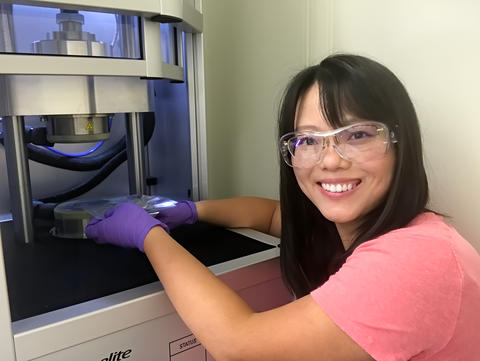
To make a difference in the world, understand the flow, but don’t go with it. The work that NIST guest researcher Ran Tao conducts in rheology, the study of how materials flow and deform, wouldn’t happen any other way.
Ran joined us at NIST five years ago after earning her doctorate with Texas Tech University. Relocating from the wild West to our bustling suburban campus in Gaithersburg, Maryland, Ran brought with her an investigative nature. Her desire to dive deeper into understanding the materials that make up the world around us has led to some significant projects.
I. Body Shock
Body armor — worn by soldiers on the battlefield and law enforcement officers at emergency scenes — isn’t inherently trustworthy. Researchers test its effectiveness by placing it against a block of clay, firing a bullet at the armor and measuring the indentation that the impact makes on the clay.
But when the clay itself is manufactured differently over time, or ages, those changes can affect the properties of the material and reliability in the ballistic testing.
Enter Ran. In collaboration with the U.S. Army, she measured and analyzed how the clay responds to forces. With her measurements of the clay’s mechanical and rheological properties, manufacturers can better evaluate their clay and the formulating process behind it.
Get into the thick of Ran’s research into body armor testing clay.
II. Consistency for the Complex
From the ketchup on your burger to the shampoo keeping your locks luscious, complex fluids permeate much of our everyday lives. The properties of these materials depend on their microscopic structures, which can change when subjected to external forces.
A problem arises when commercial products on the market don’t behave as designed because they change due to external forces put upon them during the manufacturing process, in transit to your local market or when you use them.
That’s where a rheometer comes in. It can measure the way that external forces can change a complex fluid.
But how do you know those measurements are accurate? How do you calculate error? Manufacturers have been adopting a new rheology technique because it can provide the information they need to develop stable products, but it lacked standards to ensure its accuracy. Ran jumped in with a solution, creating a calibration protocol and simulation to guide researchers using the technique.
Find out more about Ran’s work with the commercial rheology technique.
Follow us on social media for more like this from all across NIST!

